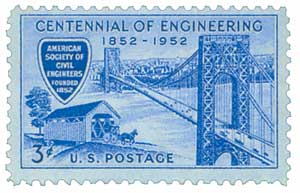
# 1012 - 1952 3¢ Engineering Centennial
3¢ Engineering Centennial
City: Chicago, IL
Quantity: 113,860,000
Printed by: Bureau of Engraving and Printing
Printing Method: Rotary Press
Perforations: 11 x 10½
Color: Violet blue
American Society Of Civil Engineers
Civil engineers are responsible for the design, construction, and maintenance of dams, bridges, roads, canals, and railroads. Some of the first calls for a professional society of civil engineers came in 1828 when John Kilbourn created his short-lived Civil Engineering Journal. Inspired by Great Britain’s Institution of Civil Engineers, he suggested the US create its own organization.
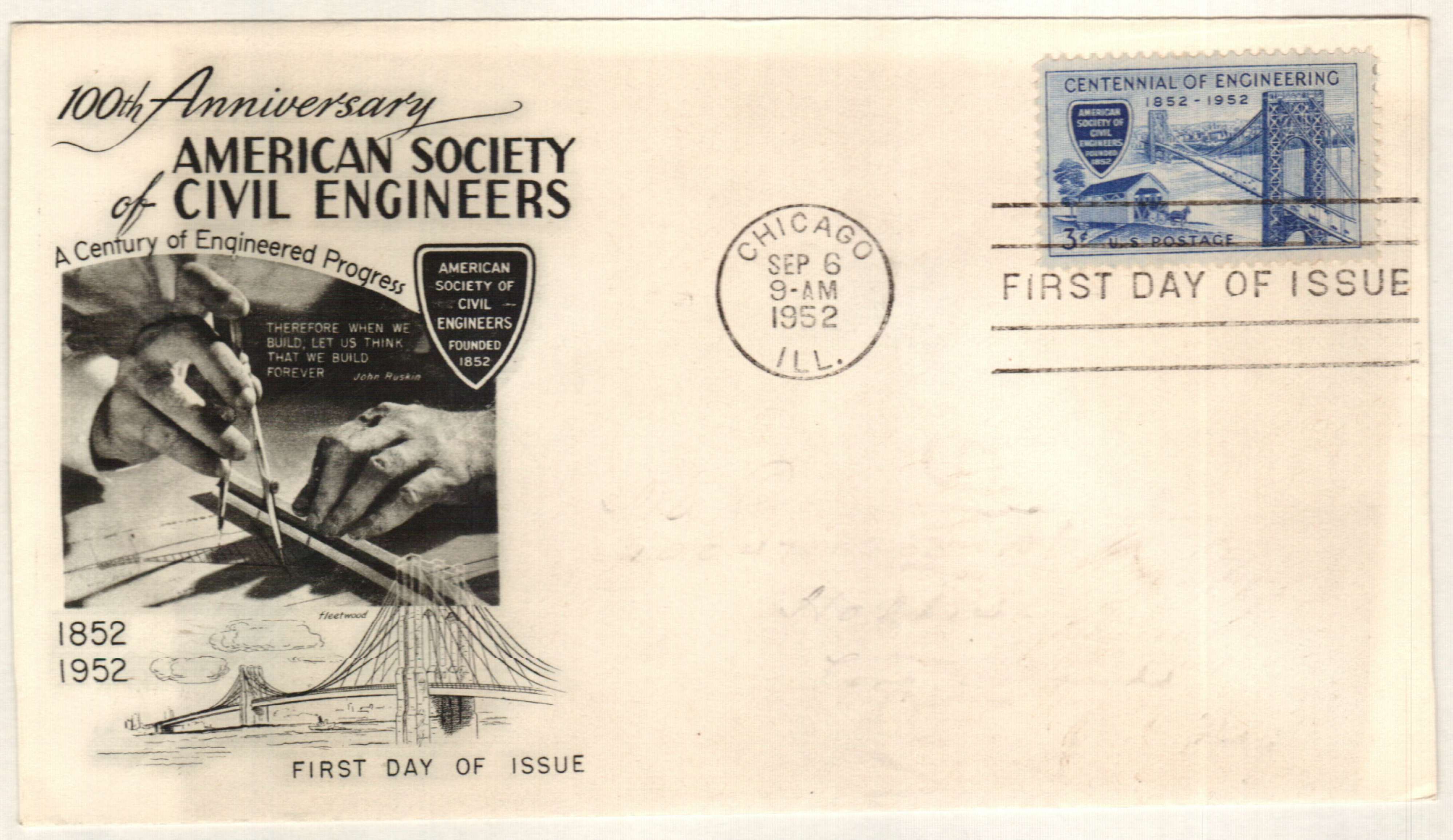
In 1838, a group of 13 notable civil engineers proposed the creation of the Institution of American Civil Engineers at the Franklin Institute in Philadelphia. And in 1839, a group of 40 engineers met in Baltimore. They got so far as drafting a constitution, but it failed to pass and the group was never formally established.
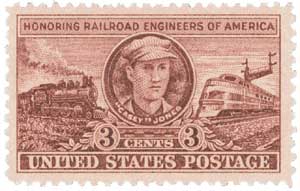
Then in October 1852, Alfred W. Craven, Chief Engineer of the Croton Aqueduct in New York City, called a meeting to form the American Society of Civil Engineers and Architects. On November 5, a group of 12 engineers met in his office at the Croton Aqueduct. Their new organization would be open to “civil, geological, mining and mechanical engineers, architects, and other persons who, by profession, are interested in the advancement of science.” The goal of the group was to increase the knowledge of engineers so they could improve the quality of their construction projects.
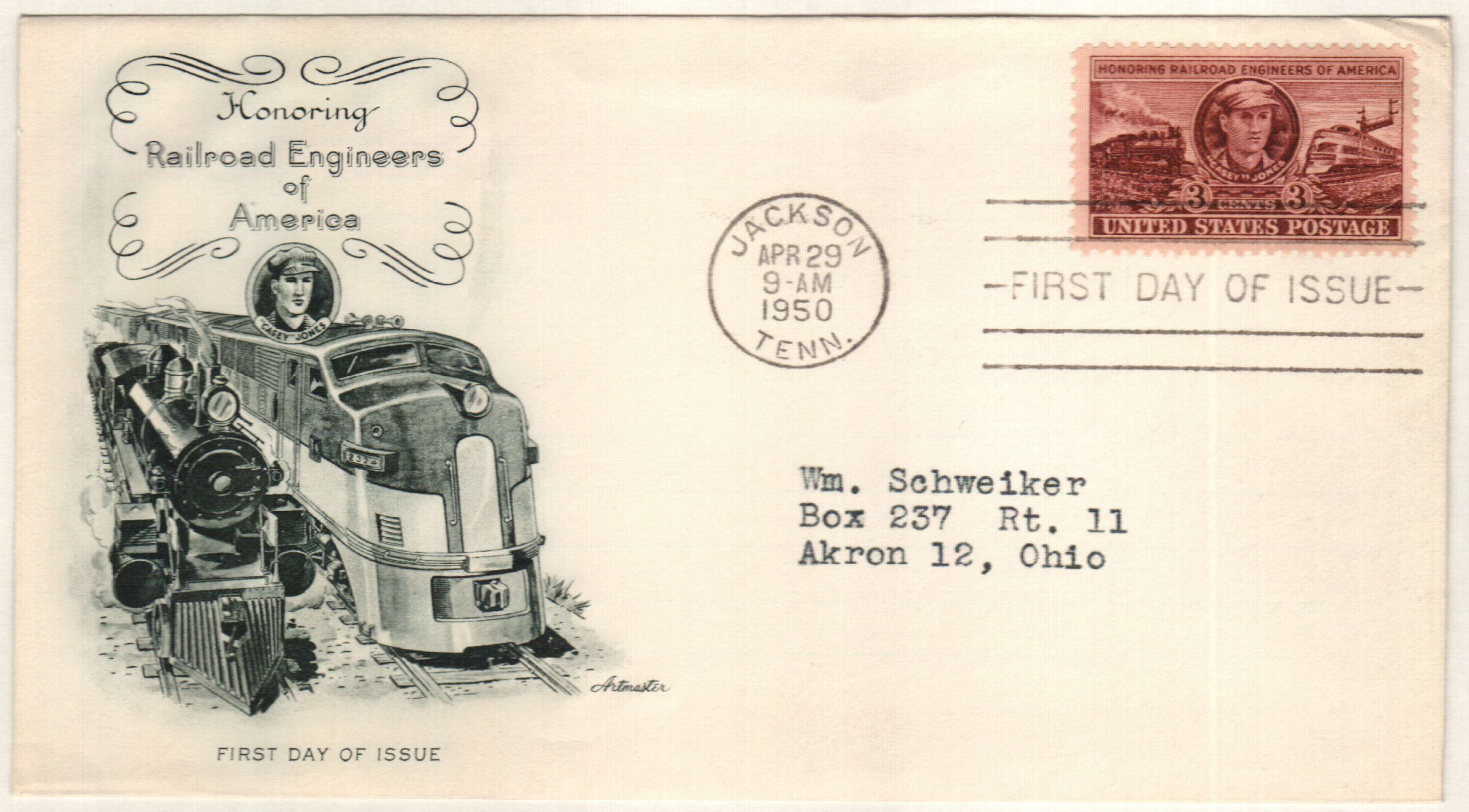
The new group met periodically until 1855, but the Civil War delayed any more meetings until 1867. When they did finally resume meetings, many of the original members were still involved, and they credited their president, James Laurie, with leading the efforts to keep the organization going. They changed their name to the American Society of Civil Engineers (ASCE) in 1868, and then created a charter and were incorporated in 1877. As America’s first engineering society, the ASCE’s founders sought to have engineers serve as global leaders working toward building a better quality of life for all people.
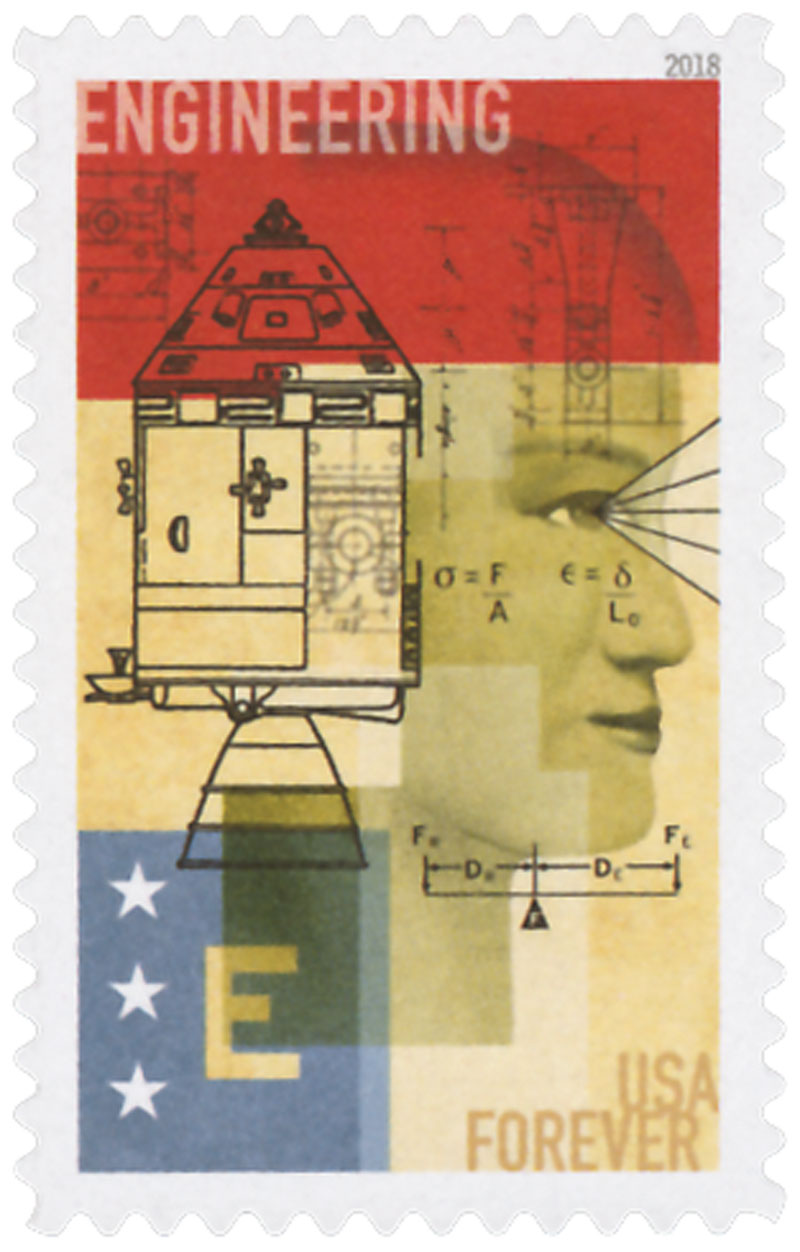
Since its founding, the ASCE has become one of the world’s leading civil engineering organizations, working to further professional knowledge among its members and improve civil engineering practices. They produce several technical and professional journals, hold several annual specialty conferences, and oversee nine full-service institutes dedicated to civil engineering. Today the ASCE has over 150,000 members in 177 countries.
Click here for more from the ASCE’s website.
For the next century, the only way across the lower Hudson River was by ferry. Then in the early 1900s, a series of tunnels were built under the river. The Holland Tunnel opened in 1928, linking Lower Manhattan and Jersey City.
During the construction of the Holland Tunnel, there had been talks of a bridge across the Hudson. Then in 1924, a plan was formed to build a suspension bridge from Fort Lee to Fort Washington. Both sides were surrounded by cliffs, which meant the bridge wouldn’t interrupt river traffic or require the construction of long approach ramps.
A bill proposing the bridge the bridge was introduced in the New Jersey Assembly in 1925 and passed with modifications. A similar bill was introduced in New York and was approved by Governor Al Smith.
Construction on the bridge began on September 21, 1927. The day’s events included groundbreaking ceremonies at the sites of both suspension towers. Before and during construction, it was unofficially called the Hudson River Bridge or the Fort Lee Bridge. The Hudson River Bridge Association then asked for name suggestions in October 1930. People in New York and New Jersey could submit their suggestions for review. The most popular name was the Hudson River Bridge, however the port Authority adopted the name George Washington Bridge on January 13, 1931. Some opposed this because there was already a Washington Bridge. The Port Authority then held a vote to consider other names, including those honoring Christopher Columbus and Henry Hudson. But they ultimately decided to stick with George Washington.
Originally, the bridge was scheduled to open in 1932, but construction was completed early. In June 1931, 40 bankers became the first people to cross the bridge. The bridge was then officially dedicated on October 24, 1931. About 30,000 people attended the ceremony, which included an aerial show by military airplanes and speeches from New Jersey governor Morgan Foster Larson and New York governor Franklin D. Roosevelt. Reportedly, the first people to cross the bridge that day were two elementary school students who roller-skated across. For the rest of the day, pedestrians were allowed to cross the bridge.
The George Washington Bridge officially opened to traffic the following day. By the end of the day, 56,312 cars had crossed and about 100,000 pedestrians. At the time of its completion, it was the longest bridge in the world, with a span of 3,500 feet. The bridge was built with six lanes of traffic, which was expanded to eight in 1946. In 1962, a lower deck was added which provided six more lanes. One of the world’s busiest bridges, the George Washington Bridge is also the world’s only 14-lane suspension bridge. The bridge collects approximately $1 million in tolls each day.
3¢ Engineering Centennial
City: Chicago, IL
Quantity: 113,860,000
Printed by: Bureau of Engraving and Printing
Printing Method: Rotary Press
Perforations: 11 x 10½
Color: Violet blue
American Society Of Civil Engineers
Civil engineers are responsible for the design, construction, and maintenance of dams, bridges, roads, canals, and railroads. Some of the first calls for a professional society of civil engineers came in 1828 when John Kilbourn created his short-lived Civil Engineering Journal. Inspired by Great Britain’s Institution of Civil Engineers, he suggested the US create its own organization.

In 1838, a group of 13 notable civil engineers proposed the creation of the Institution of American Civil Engineers at the Franklin Institute in Philadelphia. And in 1839, a group of 40 engineers met in Baltimore. They got so far as drafting a constitution, but it failed to pass and the group was never formally established.

Then in October 1852, Alfred W. Craven, Chief Engineer of the Croton Aqueduct in New York City, called a meeting to form the American Society of Civil Engineers and Architects. On November 5, a group of 12 engineers met in his office at the Croton Aqueduct. Their new organization would be open to “civil, geological, mining and mechanical engineers, architects, and other persons who, by profession, are interested in the advancement of science.” The goal of the group was to increase the knowledge of engineers so they could improve the quality of their construction projects.

The new group met periodically until 1855, but the Civil War delayed any more meetings until 1867. When they did finally resume meetings, many of the original members were still involved, and they credited their president, James Laurie, with leading the efforts to keep the organization going. They changed their name to the American Society of Civil Engineers (ASCE) in 1868, and then created a charter and were incorporated in 1877. As America’s first engineering society, the ASCE’s founders sought to have engineers serve as global leaders working toward building a better quality of life for all people.

Since its founding, the ASCE has become one of the world’s leading civil engineering organizations, working to further professional knowledge among its members and improve civil engineering practices. They produce several technical and professional journals, hold several annual specialty conferences, and oversee nine full-service institutes dedicated to civil engineering. Today the ASCE has over 150,000 members in 177 countries.
Click here for more from the ASCE’s website.
For the next century, the only way across the lower Hudson River was by ferry. Then in the early 1900s, a series of tunnels were built under the river. The Holland Tunnel opened in 1928, linking Lower Manhattan and Jersey City.
During the construction of the Holland Tunnel, there had been talks of a bridge across the Hudson. Then in 1924, a plan was formed to build a suspension bridge from Fort Lee to Fort Washington. Both sides were surrounded by cliffs, which meant the bridge wouldn’t interrupt river traffic or require the construction of long approach ramps.
A bill proposing the bridge the bridge was introduced in the New Jersey Assembly in 1925 and passed with modifications. A similar bill was introduced in New York and was approved by Governor Al Smith.
Construction on the bridge began on September 21, 1927. The day’s events included groundbreaking ceremonies at the sites of both suspension towers. Before and during construction, it was unofficially called the Hudson River Bridge or the Fort Lee Bridge. The Hudson River Bridge Association then asked for name suggestions in October 1930. People in New York and New Jersey could submit their suggestions for review. The most popular name was the Hudson River Bridge, however the port Authority adopted the name George Washington Bridge on January 13, 1931. Some opposed this because there was already a Washington Bridge. The Port Authority then held a vote to consider other names, including those honoring Christopher Columbus and Henry Hudson. But they ultimately decided to stick with George Washington.
Originally, the bridge was scheduled to open in 1932, but construction was completed early. In June 1931, 40 bankers became the first people to cross the bridge. The bridge was then officially dedicated on October 24, 1931. About 30,000 people attended the ceremony, which included an aerial show by military airplanes and speeches from New Jersey governor Morgan Foster Larson and New York governor Franklin D. Roosevelt. Reportedly, the first people to cross the bridge that day were two elementary school students who roller-skated across. For the rest of the day, pedestrians were allowed to cross the bridge.
The George Washington Bridge officially opened to traffic the following day. By the end of the day, 56,312 cars had crossed and about 100,000 pedestrians. At the time of its completion, it was the longest bridge in the world, with a span of 3,500 feet. The bridge was built with six lanes of traffic, which was expanded to eight in 1946. In 1962, a lower deck was added which provided six more lanes. One of the world’s busiest bridges, the George Washington Bridge is also the world’s only 14-lane suspension bridge. The bridge collects approximately $1 million in tolls each day.









